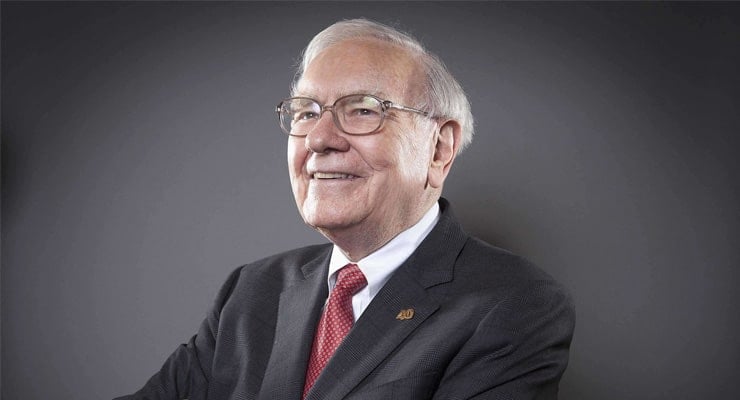12 Best Investment Portfolios: SovereignBoss Should Consider in 2025

SovereignBoss adheres to a stringent code of editorial guidelines, but some articles may feature partner references. Here is an explanation for how we make money.
- The best investment portfolios for seniors in the UK often contain a mix of conservative bonds, high-dividend stocks, and real estate funds.
- After age 65, choosing usually involves balancing growth with risk, taking into account your financial goals, risk tolerance, and time horizon.
- Some of the companies include Vanguard, BlackRock, and Fidelity.
- Important factors to consider include your risk tolerance, investment goals, time horizon, and the diversity of the portfolio.
- While none are completely risk-free, those containing government bonds and blue-chip stocks are often considered the safest options for those above 65.
In This Article, You Will Discover:
If you have leftover cash just sitting in the bank then you're missing an investment opportunity with some of the best investment portfolios.
But where to begin right?
With so many different investment opportunities, it can be hard to know where to start.
The investment portfolios listed below are designed for both conservative and high risk investors so there will definitely be one that's right for you.
#1. Warren Buffett - The 90/10 Portfolio
The Buffett portfolio is designed for conservative investors and relies primarily on a single investment in an S&P 500 index fund.
This strategy offers stability with lower risk than many other strategies.

#2. Paul Merriman - Ultimate Buy and Hold Strategy
The Merriman portfolio is designed for those with higher risk tolerance.
This strategy relies on the belief that stocks will always rebound, and therefore investing in individual equities is more advantageous than other investment strategies.

#3. Ivy League Endowments
The Ivy portfolio is designed for those who want to avoid the volatility of individual stocks and bonds.
This strategy relies on investments in a mix of large-cap equities1, small-cap stocks, international funds, emerging markets funds as well as fixed-income securities.
#4. Coffeehouse Portfolio
This strategy is designed for those who want to invest in a passively managed portfolio that avoids much of the cost associated with traditional investment funds.
This strategy invests equally in low volatility stocks, international funds, and bonds.

#5. Bill Bernstein's No Brainer Portfolio
This strategy invests in just three funds: one each for large-cap stocks, small-cap stocks, and international equities.
This portfolio has the lowest volatility of any diversified equity portfolio with 15% or less risk according to Bernstein's calculations.

#6. Harry Browne's Permanent Portfolio
This strategy is for conservative investors who are willing to take on risks in the event that they need an emergency fund.
This portfolio invests 25% each into stocks, bonds, and gold with no allocation changes even during times of crisis or recession.

#7. Popular Portfolio Types
The Aggressive Portfolio
The aggressive portfolio invests in stocks that are riskier. This portfolio invests 80% of the money into stocks and 20% into bonds.
There's an allocation change once per year after a review of how well the fund did over the previous 12 months.

The Defensive Portfolio
The defensive portfolio invests in stocks that are less risky.
This strategy keeps about 90% of the money invested in bonds and provides a constant amount of income to investors, but has only about 30% allocated to stocks.

The Income Portfolio
The income portfolio invests in stocks that pay a dividend.
The strategy tries to have about 50% of the money invested into stocks for growth and maturity while keeping the other half invested in bonds or cash with interest rates higher than normal savings account yields.

The Speculative Portfolio
The speculative portfolio invests in stocks with a high potential to grow.
The strategy tries not to invest more than 50% of the money into any individual stock or company, and it's designed for investors who are willing to take risks.

The Hybrid Portfolio
The hybrid portfolio invests in both stocks and bonds.
It's designed to provide a balance of growth, income, stability, and risk-taking for more conservative investors who want to take some risks with their money but still be cautious about it.

The Risk Adverse Portfolio
The risk-averse portfolio invests in bonds and cash. It's designed for investors who are conservative with their money and prefer to avoid the risks of investing in stocks altogether.

Common Questions
What Are the Best Investment Portfolios for Seniors in the UK?
How to Choose the Best Investment Portfolio After Age 65?
What Factors to Consider When Choosing the Best Investment Portfolio?
Are There Risk-Free Best Investment Portfolios for Those Above 65?
Which Companies Offer the Best Investment Portfolios for Retirees?
In Conclusion
It’s easy to get overwhelmed by all the information about investing, but you don’t need a degree in finance or economics to make good decisions.
All of these portfolios have been hand-selected and vetted by experts so that investors can take advantage of their wisdom without needing an MBA.
You may be wondering which portfolio is right for you and there isn't one answer.
The best investment portfolio for you depends on your personal goals and time horizon.
References
- www.financial-expert.co.uk/how-to-build-a-basic-diversified-portfolio-of-investments/
- www.forbes.com/sites/simonmoore/2018/07/26/six-expert-investment-portfolios-you-can-implement-today/?sh=64eea15d74b2
- students.bestwheretoinvest.work/5.html
- www.which.co.uk/money/investing/how-investing-works/building-an-investment-portfolio/how-to-invest-money-our-investment-portfolios-ahtcz1s1ynb2
- www.whitecoatinvestor.com/150-portfolios-better-than-yours/
- www.investopedia.com/articles/basics/11/5-portfolio-protection-strategies.asp
- prawo.uni.wroc.pl/sites/default/files/students-resources/IPM%2017.11.2016%20-%20Investment%20Portfolio%20Protection.pdf
- lenpenzo.com/blog/id60022-8-common-portfolio-protection-strategies.html
- www.diva-portal.org/smash/get/diva2:1229553/FULLTEXT01.pdf
- www.kiplinger.com/article/investing/t052-c000-s002-timely-strategies-to-protect-your-portfolio.html



